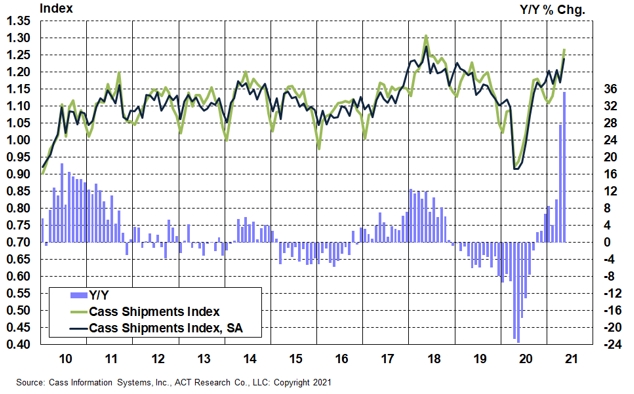The COVID-19 pandemic will surely go down in history as one of the most chaotic times the world has ever experienced. Essential workers sacrificed their health and stretched themselves thin for the American people, spending many hours away from their homes to meet the increasing pressure brought on by restrictions and regulations.
As people begin recovering from the effects of the pandemic and vaccines are distributed throughout communities, many industries are forced to relook at how they handle business. So, what does this mean for the trucking industry in this post-pandemic era?
Why Fleets are Experiencing 2021 Prosperity
Since the beginning of the pandemic, consumers have continuously relied on online platforms for their wants and needs. And as businesses open back up, many flock to the sight of normalcy, leaving companies in need of constant supply. This consistent demand has fallen on the backs of truckers nationwide and has many freight companies stretched thin.
In May alone, total spending on freight surged to a record 50% year over year, while shipping volumes swelled to a whopping 35%, making this year the second-highest index level ever recorded. “It’s safe to say the pandemic recovery is progressing much faster than the recovery from the Great Recession,” according to the Cass Freight Index.
However, this overwhelming need has ultimately led to an intense growth in domestic shipping rates, and in turn, a shortage in freight vehicles and drivers. With consumerism at an all-time high, the demand for technological advances, logistical adaptations, and competitive packages are needed within the trucking industry now more than ever.
->*Used Truck Prices Continue to Skyrocket
Technological and Logistical Adaptations
During COVID-19, the logistics were constantly changing, leaving fleet operators looking for the most efficient way to deliver goods. Fleet carriers, suppliers and drivers were forced to adopt new technologies in order to communicate and operate.
Support teams scrambled to set up shop from their new home offices, onboarding and training employees in tandem on complex software applications to optimize routes, and learn contactless payment systems to reduce exposure.
All the headaches and changes have to lead to a safer, happier, and more productive supply chain and delivery system. The dream of being able to bump the docks and roll onto the next load and enjoy the high tide of “The Era of Post COVID Trucking” is alive as well.
The Future Looks Bright
“We’re just in the beginning stages of this very robust recovery,” said Bob Costello, chief economist at American Trucking Associations. “Some younger people have never seen an economy grow like this before,” he said. “People in their 20s and early 30s have never seen anything like this over a sustained period of time.”
The trucking industry will continue to experience growth in the coming months as long as fleets continue to hire more drivers and balance out the supply and demand issue. Enticing workers to become professional drivers will be (and has been) the primary obstacle for the freight market.
“I’m hopeful that we’ll start seeing people come back into the job market … and we get a closer balance between supply and demand, and that holds up in ’22 so that we don’t see rates come down too substantially and put the market into another freight recession like we saw in 2019,” said Hugh Ekberg, CEO of diversified carrier CRST.
Want more news like this?




